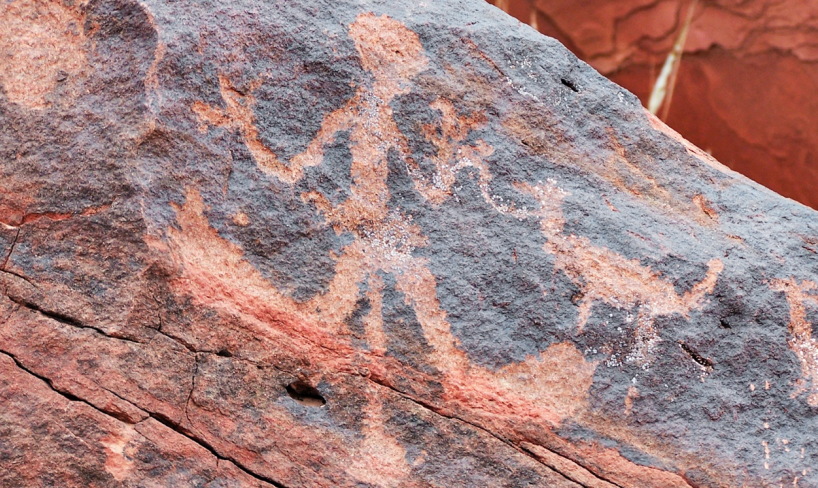In the middle of the desert of Saudi Arabia is a large stone formation. The gigantic rocks, seemingly completely isolated in the sand, could be strange enough. But their real special feature is a cleft that split the boulder straight into two.

The Al Naslaa rock formation is 4000 years old, nine metres high and almost eight metres wide. It is located in the Arabian Desert, near the oasis of Tayma, in the northwest of Saudi Arabia.This is primarily because of the perfect cut that divides the rock into two halves – and the question of how it was formed still fascinates many.
Conspiracy theorists and alien fans are gearing up to offer an explanation. Some suspect that an older but advanced civilisation has made the cut in the stone. Similar to the blocks of the Giza pyramids, which were built about 4500 years ago, the cut could have been made by sand and a rope. In a YouTube video of the channel "Ancient Architects" it is speculated that the ancient civilisation could have used the stone as a gathering place or for certain purposes. The theory is supported by the fact that the right-hand stone was decorated with several drawings, including a human and a horse.

Many people are also enthusiastic about the theory that alien creatures split the rock with a laser. But there are also sceptics among conspiracy fans. "Imagine the aliens developing technology unimaginable to humans, and to arrive on Earth only in order to split a rock with their laser," writes an anonymous user on Reddit. The scepticism is totally plausible, albeit for a different reason: it has been proved that aliens had nothing to do with the rift of Al Naslaa – and neither did an ancient but advanced civilisation.
Cherry Lewis, researcher at the University of Bristol, told the Daily Mail that the crack is thought to have been made by natural forces. "The crack could have been caused by a process called 'weathering'," Lewis explains. This process occurs when water enters what is initially a small crack in the stone, and then, when the weather gets colder and the water freezes, it expands. This makes the crack deeper, larger, and longer. And when the weather gets warmer again, the water penetrates still deeper into the stone. "This process repeats itself over thousands or even millions of years until the rock eventually cracks open," Lewis elaborates.

The process, coupled with wind erosion that acts like a sandblast in a desert environment, would also explain why the rock stands alone. This effect, Lewis says, is what gives the cut such straight edges. The phenomenon also explains the smooth front of the rock formation. Such an explanation is admittedly not quite as exciting as one that involves aliens or unknown advanced civilisations, but the crack of Al Naslaa is nevertheless spectacular.





